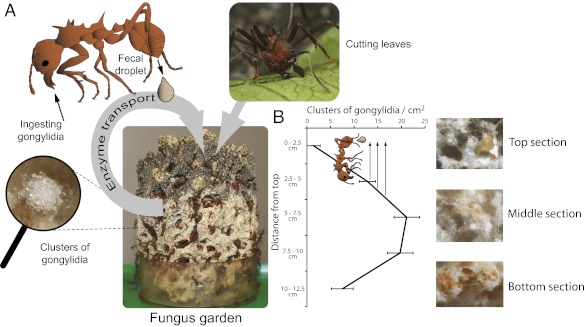Fig. 1.
Diagram illustrating the dynamics of fungal enzyme transfer and substrate processing in leaf-cutting ant fungus gardens, which grow at the top or periphery and are cropped and discarded by the ants at the bottom (19). (A) Ants deposit chewed-up fresh leaf fragments combined with fecal fluid at the top of their garden (green shade). Fecal fluid vectoring of fungal enzymes resolves the problem that low fungal biomass in the top sections of gardens would delay substrate decomposition. (B) Fungal gongylidia (Inset Left) concentrate fungal enzymes to be eaten by the ants, but are most abundant in the central layer of the garden where fungal growth is most vigorous [mean number of gongylidia clusters (staphylae)/cm2 ± SE from four A. echinatior colonies]. Leaf-pulp decomposition rate is therefore enhanced when the farming ants transfer fungal enzymes from the middle to the top of a garden by deposition of fecal droplets that vector these gongylidia-produced enzymes.

